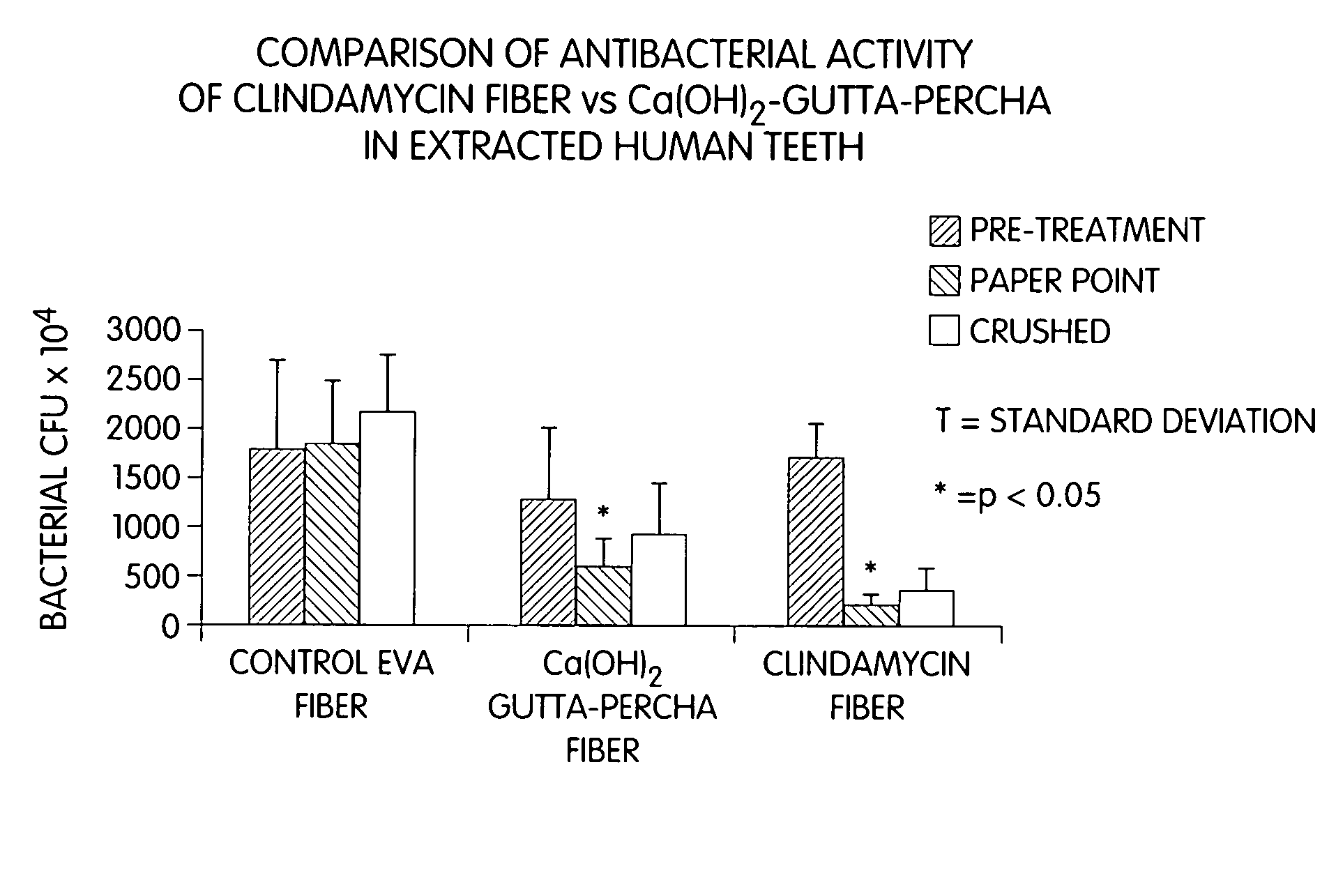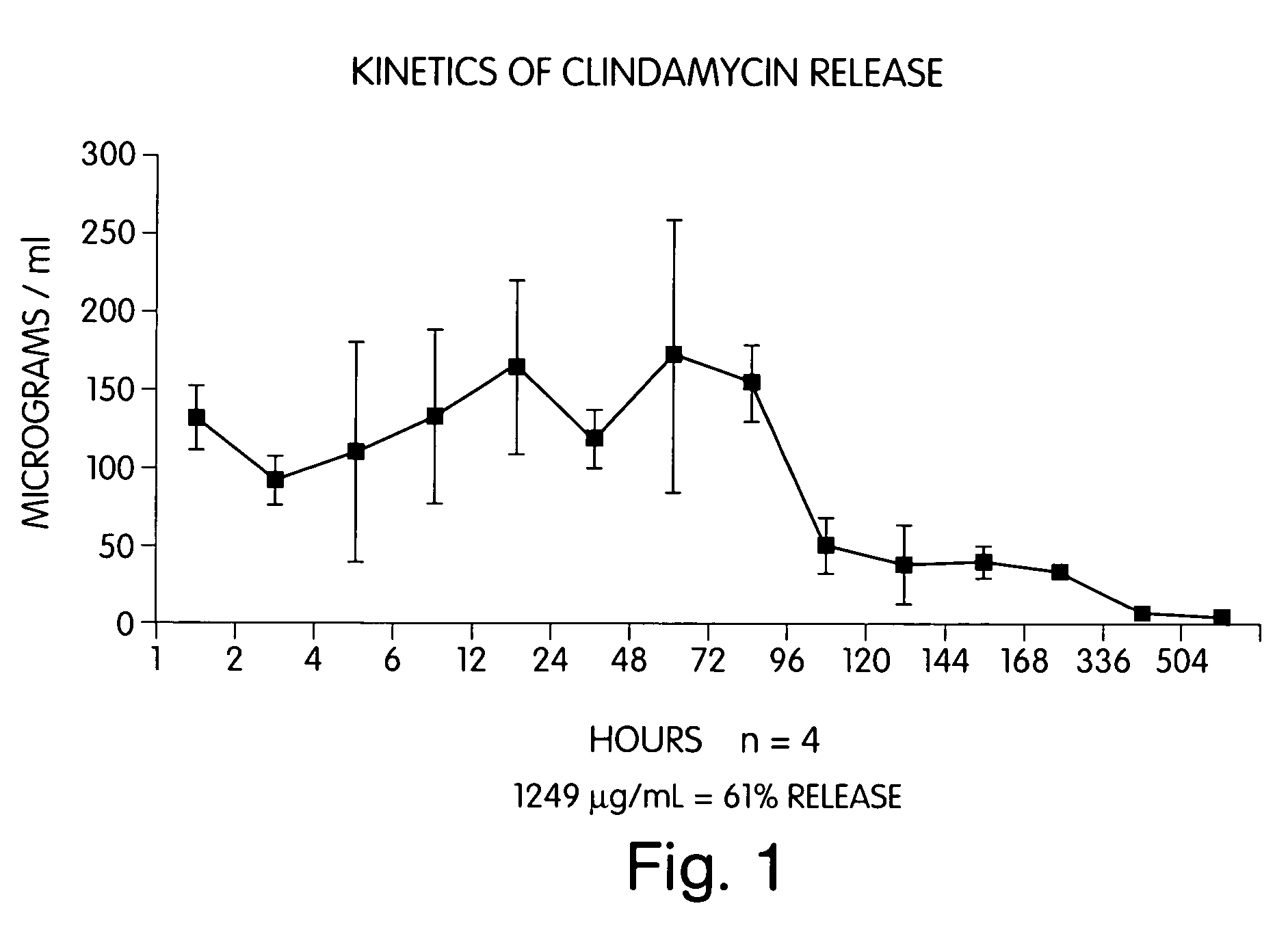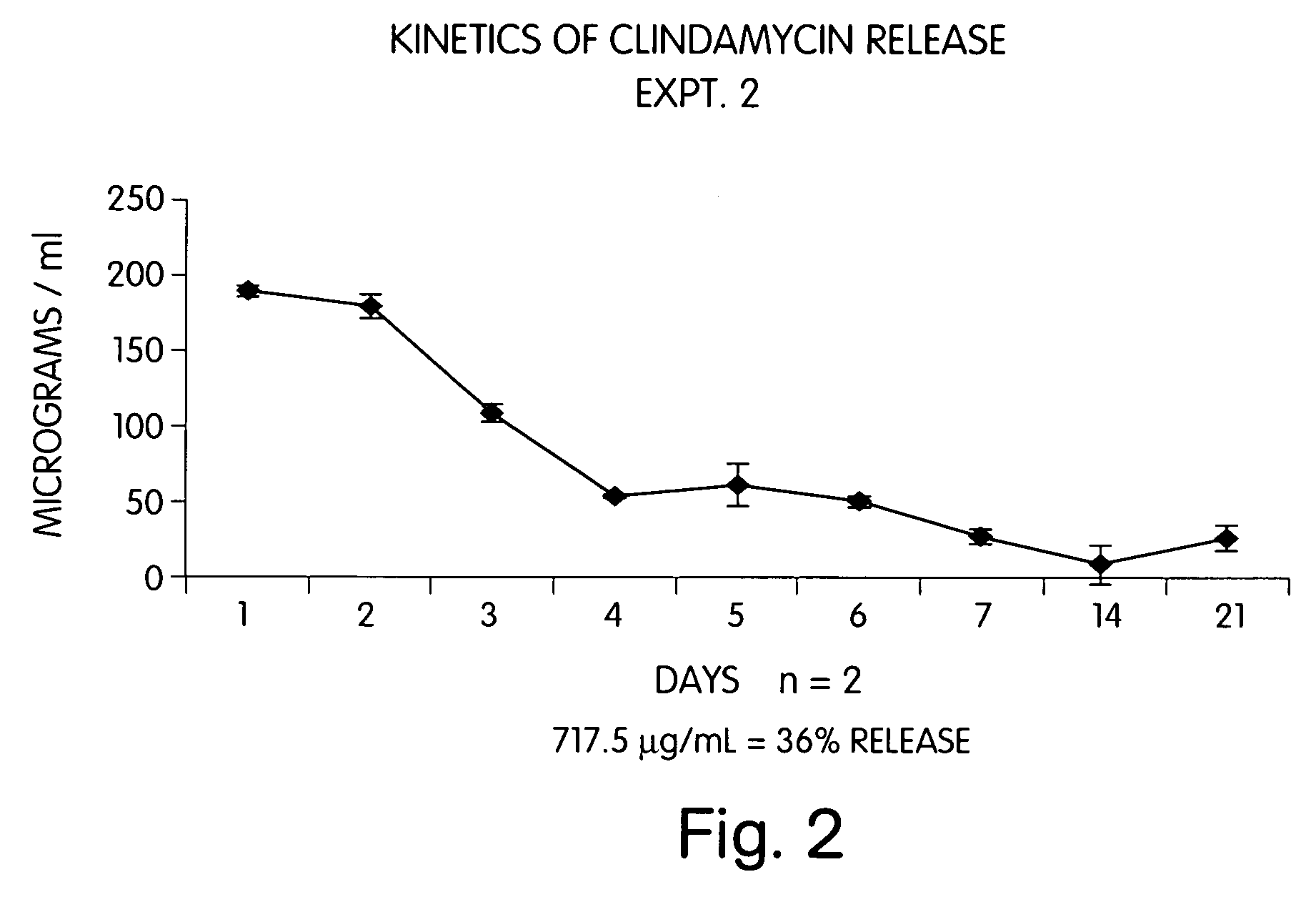Characterization of an antibiotic impregnated delivery system as an intracanal medicament in endodontic therapy
a delivery system and antibiotic technology, applied in the field of dentistry, can solve the problems of ineffective composition against anaerobic species, low incidence of flare-ups, and limited systemic antibiotic treatment for root canal infections and exacerbations, so as to reduce the level of patient pain, suppress bacterial growth, and reduce the effect of endodontic treatment failures
- Summary
- Abstract
- Description
- Claims
- Application Information
AI Technical Summary
Benefits of technology
Problems solved by technology
Method used
Image
Examples
examples
Periodontal Fibers
Preparation of a Periodontal Clindamycin / EVA Endodontic Fiber and in vitro Efficacy Against Endodontic Pathogens
[0045]First generation (periodontal) clindamycin / EVA endodontic fibers were prepared according to a method used for the preparation of periodontal tetracycline / EVA fibers (as described in U.S. Pat. No. 4,892,736) with slight modifications. In brief, 0.075 g calcium phosphate monobasic (CaH2PO4) was combined with 10 mL distilled water (dH20) and added to a solution consisting of 0.050 g clindamycin phosphate and 10 mL dH20. The combined solution was then lyophilized for 24 hours. The resultant powder was filtered through a #325 mesh sieve (W.S. Tyler Co., Mentor, Ohio) in order to achieve uniform particle size of 45μ. The resultant yield (125 mg) was combined with 375 mg of EVA particles (USi Inc., TN) and processed through an extrusion plastometer (Tinius Olsen Co., Willow Grove, Pa.) at diameters of 2.0 mm, 1.0 mm, and 0.5 mm. The final extrusion produce...
PUM
 Login to View More
Login to View More Abstract
Description
Claims
Application Information
 Login to View More
Login to View More - R&D
- Intellectual Property
- Life Sciences
- Materials
- Tech Scout
- Unparalleled Data Quality
- Higher Quality Content
- 60% Fewer Hallucinations
Browse by: Latest US Patents, China's latest patents, Technical Efficacy Thesaurus, Application Domain, Technology Topic, Popular Technical Reports.
© 2025 PatSnap. All rights reserved.Legal|Privacy policy|Modern Slavery Act Transparency Statement|Sitemap|About US| Contact US: help@patsnap.com



